The fungus of the toes is a problem that bothers many.Itching, burning and ugly skin and nails is just a small part of it.The disease is dangerous with complications that are even more difficult to cure.However, it is possible to deal with the problem if you are seriously treating the treatment of fungal infection (mycosis).
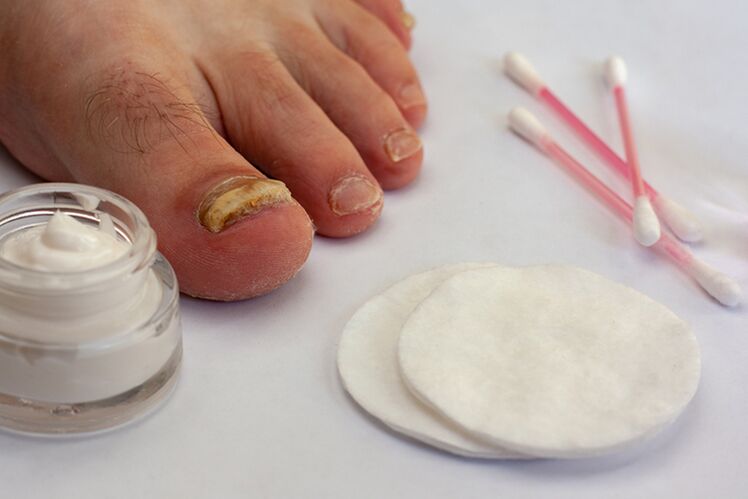
Why do fungi appear on the feet?
Fungi are one of the types of infectious agents that affect the skin.These are difficult and extremely stubborn microorganisms.Therefore, fungal diseases require a serious and integrated approach to treatment.
The fungus has their favorite habitats on the skin.First, it is the skin of the toes and nails.The reason for this is understandable - the legs are usually inside the shoes, inside which they accumulate a lot of moisture and dirt, as well as very hot.Therefore, the fungi that live on the feet have a lot of food and a favorable microclimate for spreading.Some types of complex mushrooms often affect the skin, and other types of mushrooms, such as yeast and molds, prefer nails.Perhaps simultaneous infection with several types of fungi at once.
Contribute to the development of fungi of the fingers:
- reduced local and general immunity;
- poor leg hygiene;
- uncomfortable and tight shoes;
- irregular change of socks or socks;
- Wearing socks or socks of synthetic materials that do not pass the air;
- Regular hypothermia or leg overheating;
- blood circulation in the legs;
- varicose veins;
- chronic diseases of the cardiovascular system, diabetes mellitus;
- long course of antibiotic treatment;
- increased sweating of the legs;
- lack of vitamins and mineral elements in the body;
- Mechanical damage to the skin, corn, leg trauma;
- Excessive physical weight of the legs;
- Improper toenail hairstyle.
The most important of these factors are reduced immunity and blood circulation in the legs.Reducing immunity can occur for various reasons.Usually these are severe chronic diseases, mainly infectious.Also, immunity can decrease due to HIV by taking immunosuppressants with cancer.Disruption of blood circulation in the toes is no less important for diseases of the blood vessels, blood, diabetes, smoking.
Stop mycoses can develop in men and women.In adults, they occur more often than in children.
Some types of mushrooms are permanently inhabited on the skin and are only activated in adverse circumstances, such as Candida fungi.Other species are transmitted from person to person.The infection can occur when visiting fitness, bath, shower, if at the same time a person does not use personal shoes.In addition, people who wear foreign shoes or socks, or allow other people to use them are at a significant risk of infection.Often the infection occurs when the same towels, manicure consumables, etc.Factors that increase the likelihood of infection are cut to the surface of the skin, deformation of nail plates.
Symptoms of mycosis of the fingers
The main symptoms of leg mycosis are itching and burning.Redness of the skin, small bubbles, increased peeling and lowering of the skin, an unpleasant odor can be observed.The first symptoms of skin mycosis can be confused with simple irritation, gratitude.
Symptoms of onychomycosis
The fungus can affect not only the skin but also the nails.The last variety of mycosis is called onychomycosis.The main symptom of onychomycosis is a change in the structure and type of nails, its increased Brittate.The nail turns yellow, the furrows and cracks appear on its surface, the nail plate thickens and deforms.If you do not treat treatment, the nail will gradually exfoliate from the nails and collapse.
What does your finger sponge look like: Photo
You should not diagnose yourself through photos.The diagnosis should be made by a qualified dermatologist.
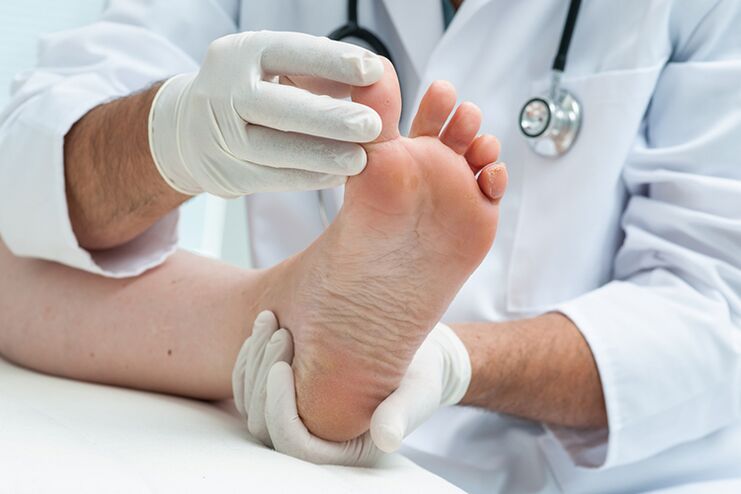
Only he can determine the type of fungi.To do this, he may need not only external leg examination, but also laboratory tests of skin scrapers.
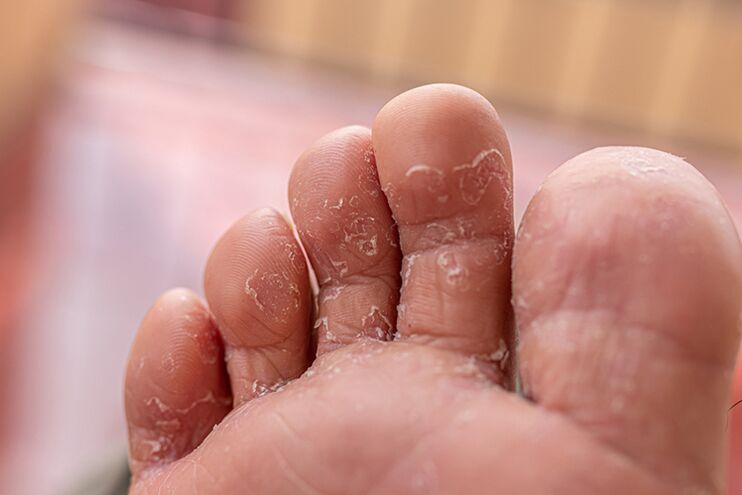
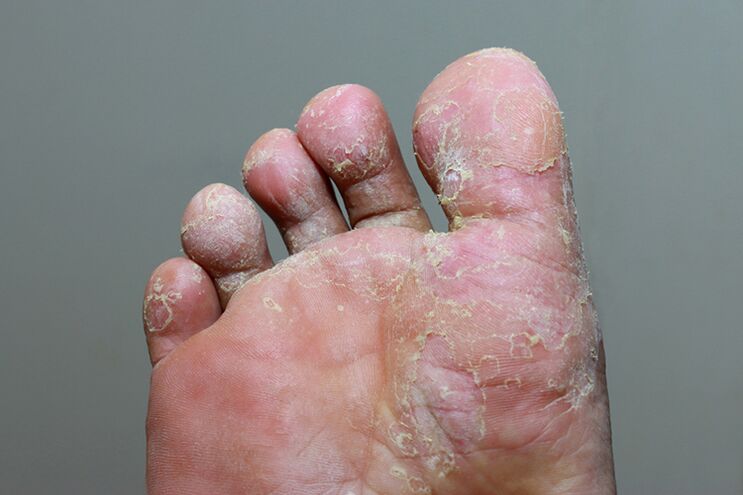
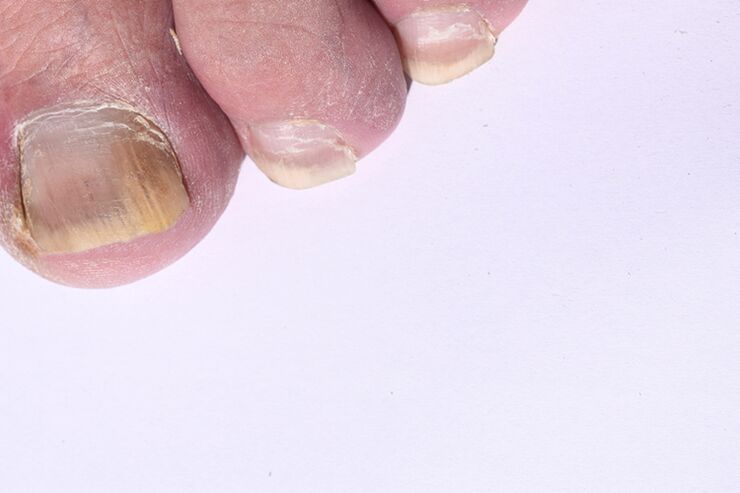
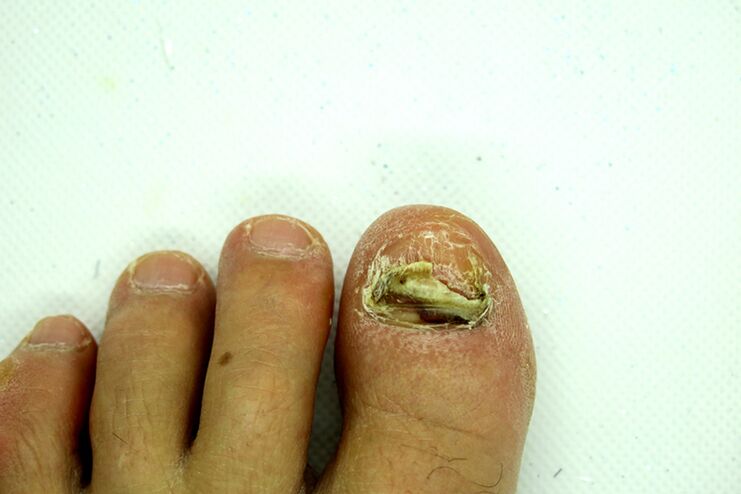
However, the presence of signs, at least remotely resembling the photos depicted in the photos, is an occasion for concern and see a doctor.
The treatment of the disease is exhaustive and is performed at home under the supervision of a doctor.
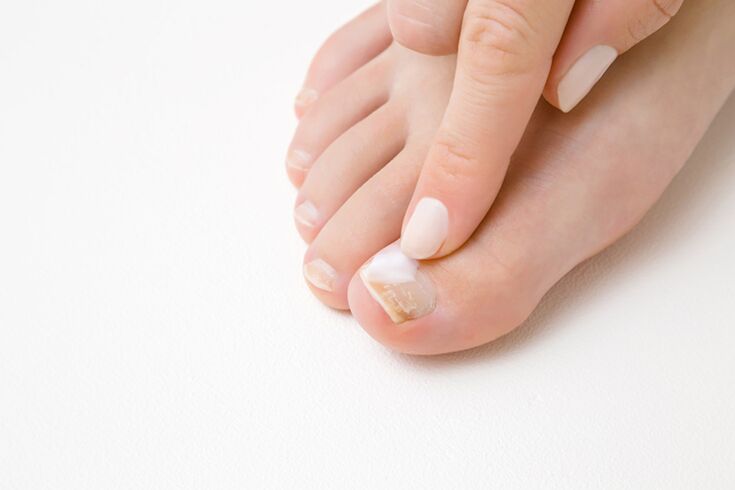
Fungus on the little finger
The fungus can affect the skin of each toe.But the small toes on the legs are most vulnerable to the infection.The little finger in tight shoes is often compressed, which causes seals on the skin and blood circulation is impaired.With damage to the finger of the little finger, the disease develops very quickly, faster than with any other nail.When infected with a little finger, the infection can very quickly touch other fingers.
The fungus of the little finger is treated in the same way as the fungus in other areas of the skin.With the onychomycosis of the finger of the little finger, the most rational outcome may be to remove its nails.This surgery will not cause much discomfort to the patient because the nail of the little finger is growing rapidly.Although the nail does not grow again (this may take 3-4 months), it is necessary to use antifungal medicines to prevent re-infection.
How to treat fingers on your fingers?
Treatment of mycosis should be started at the first alarming symptoms.First, you should contact a dermatologist for diagnosis.Before starting therapy, it is necessary to determine the fact of the presence of mycosis and the type of pathogenic microorganisms.For this purpose, the doctor will take a scraping from the skin or cut a piece of nail (with damage to the nail).Blood tests, sugar for sugar are donated.Mycosis of the skin of the feet should be differentiated from:
- other infectious skin diseases;
- allergic reactions;
- Dermatoses caused by diabetes, vascular diseases, stress and nervous diseases.
Local products (sprays, ointments, creams) are most commonly used to treat leg mycosis.Only in severe cases can the doctor prescribe antifungal tablets.Most commonly used tablets with fluconazole, itraconazole, terbinafine.
Treatment is based on the use of antifungal agents.This type of drugs contains substances that kill mushrooms (fungicidal) or stop their reproduction (fungistatic).
What antifungal agents are most commonly used:
- Clotrimazole,
- Ketoconazole,
- Terbinafine,
- Nystatin,
- Miconazole,
- The environment,
- Fluconazole.
Local drugs with antibacterial, anti -inflammatory and keratolithic properties are also used.Antibacterial agents are prescribed if soup occurs, that is, the bacterial is attached to a fungal infection.Anti -inflammatory drugs do well with the unpleasant symptoms - itching and burning.However, they do not affect the cause of the disease - pathogenic microorganisms.Keratolytic agents include zinc, sulfur and sulfur ointment.They accelerate the regeneration of skin tissues due to the acceleration of the exfoliation of the dead epidermis.
For therapy for stop mycosis, baths with antiseptic agents - solutions of potassium permanganate, iodine, salt, dietary soda, boric acid.The bathrooms are best made before bedtime for 20 minutes.To prevent spore infection, you should treat healthy skin areas with chlorhexidine, iodine, hydrogen peroxide, potassium permanganate.For therapy with techomycosis, varnishes with antifungal substances are used - Loceril, Exoderil, Batrophen.These varnishes should be applied to the nails.
Flit and creams should be applied for pre -washed and clean skin with the frequency specified in the product instructions.The area of use of the ointment should be slightly larger than the area of visible damage.To apply the nail to the nail plate, the nail must be stewed, the uneven edges must be grinded with a file, and the surface of the nail must be defused with a solution containing alcohol.
In folk medicine, the infusions of medicinal plants are used to get rid of mycosis of the feet - chamomile, calendula, sage, St. John's wort, mint, vinegar, onions and lemon juices.
What should I do if the sponge does not pass on the finger?
Treatment of mycosis is a long and difficult process.Fungal microorganisms are very stubborn and after a few days it is impossible to get rid of them.Sometimes it takes many months of careful therapy.At the same time, it is impossible to interrupt therapy for one day.The treatment of onychomycosis cannot be completed until a new, healthy nail grows.
It is also important to consider other factors related to the development of the disease.Failure to comply with skin hygiene and optimum temperature of the legs can reduce all therapeutic efforts to zero.This means that it is necessary to wash the surface of the skin of the feet regularly, to avoid overheating or hypothermia.It is also important to avoid mechanical damage to the skin, excessive strain on the legs, cuts and injuries.Excess weight increases the pressure on the legs, so if you suffer from fullness, you should consider weight loss.
If the patient is constantly wearing shoes infected with a sponge, then there are no powerful drugs here because the place of dead microorganisms will immediately take new ones.Therefore, it is necessary to get rid of all the factors that contribute to a re -infection.You can't go to foreign shoes, socks.The socks should be washed thoroughly and changed regularly.The inner surface of the shoes should be sprayed carefully with anti -inspired agents.
In persistent mycosis, it is necessary to analyze the overall health.This may help to identify the causes of impaired immunity and blood circulation in the legs.Therefore, it is possible to undergo a comprehensive examination and to rule out problems with the heart, blood, vessels, organs of the endocrine system.
Finally, microorganisms may simply develop resistance to the antifungal agent used.Then it will be necessary to change the medicine.System antifungal drugs may be needed in tablets.The dosage of the drugs should be selected by a dermatologist.
























